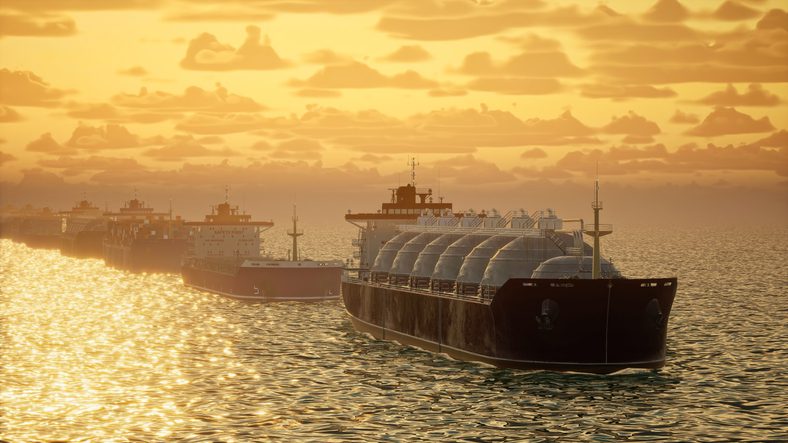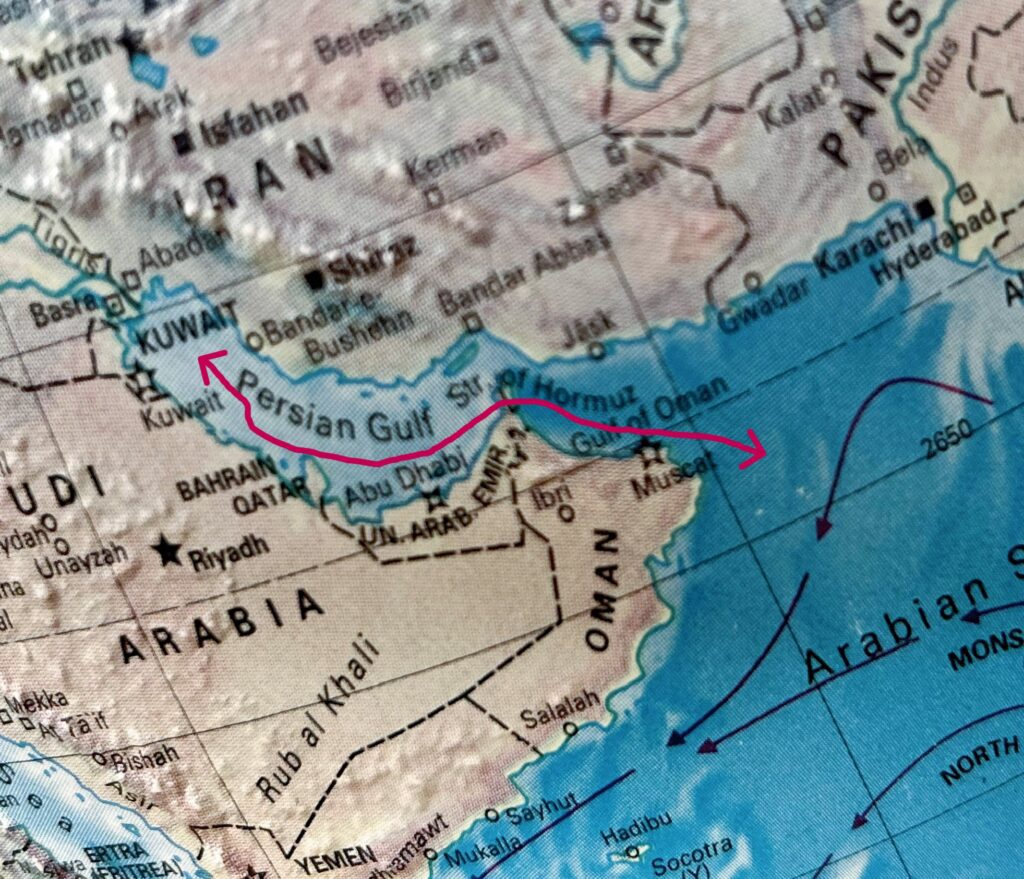
Iran, has been beaten down, but not defeated no matter how harsh a payback by Israel or the U.S will still exist. Ultimately Iran controls whether the St. of Hormuz remains open for the transit of around 20 million bpd of oil passing through from Saudi Arabia & other Gulf nations. Along with the entire output of Qatar’s LNG. There may come a point when Iran may say if we can’t ship any oil then nobody can ship oil through the vital strait.
The St. of Hormuz shown below is bordered by Iran to the north and the southern edge is United Arab Emirates providing only access point into the Persian Gulf reaching Kuwait, Qatar, Saudi Arabia, and Iraq. There is no round about such as vessels rerouting around Africa avoiding the Red Sea and Houthi’s .
Physical Narrowest Point 35 miles / Widest 60 miles. A Very large crude carrier can carry on average about 2 million barrels. So that figure puts about 10 VLCCs per day. To get an idea the size of a VLCC think 3.5 football fields length and 200 feet width. That’s for a crude carrier.
Add Qatar again dependent on the St. of Hormuz to ship its LNG we’re looking on average of two or three vessels per day. A LNG tanker Q-max contains on average 264,000 cubic meters of LNG. The Q-max think the same as a VLCC. About Three football fields (1,130 feet) and width of 175 feet.
Physical Narrowest Point 35 miles / Widest 60 miles.

